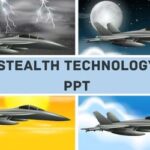Hawk-Eye technology is an advanced vision-based system used in sports to provide accurate and real-time decisions. It uses high-speed cameras and sophisticated software to track the trajectory of balls, ensuring fairness and precision in games. Developed in the early 2000s, it has become a crucial tool in sports like tennis, cricket, and football.
Also See: Ambient Intelligence PPT
Hawk Eye Technology PPT: Working, Advantages, Applications
How Hawk-Eye Technology Works
Hawk-Eye uses multiple high-speed cameras placed around the playing field or court to capture the movement of the ball from various angles. The data collected is processed using advanced algorithms to create a 3D representation of the ball’s trajectory. This simulation helps determine the exact position and movement of the ball, providing accurate decisions for umpires or referees.
Also See: Smart Dust PPT
Applications in Sports
In tennis, Hawk-Eye is used to decide whether a ball is in or out by tracking its landing point on the court. In cricket, it assists in decisions like LBW (Leg Before Wicket) by predicting the ball’s trajectory after hitting the batsman. In football, it is utilized for goal-line technology to confirm whether the ball has completely crossed the goal line. Other sports, such as baseball and rugby, also benefit from its precise tracking capabilities.
Advantages
Hawk-Eye enhances the accuracy of decisions, reducing human error and increasing fairness in sports. It provides instant feedback to players, officials, and spectators, improving the overall experience. The system’s transparency also boosts confidence in officiating.
Also See: EyeRing Technology PPT
Limitations
While highly reliable, Hawk-Eye is not infallible. It relies on camera placement and quality, which can affect accuracy. Additionally, the technology is expensive to implement, limiting its usage to high-profile events and organizations. Despite these challenges, Hawk-Eye continues to revolutionize sports decision-making.
Table of Content for Hawk-Eye technology PPT
- What is IT?
- How Does it Work?
- Working Diagram
- Components
- Timeline
- Applications
- Advantages
- Disadvantages
- Conclusion
Free Download Link





